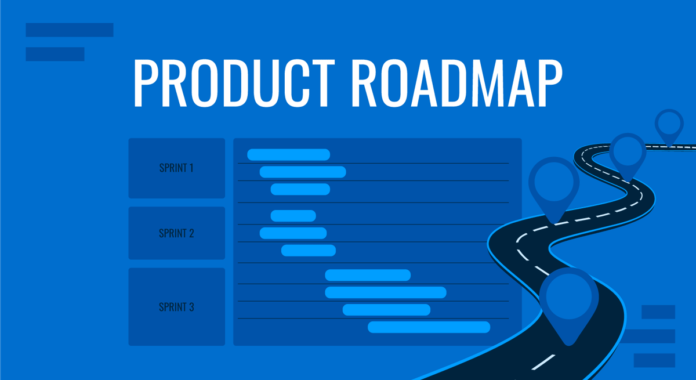As technology continues to evolve, product development teams are faced with an ever-increasing need for efficient and collaborative tools to manage their projects effectively. The product roadmap, a crucial aspect of the product development process, serves as a strategic guide that outlines the direction of a product over a specific timeframe. For businesses to stay competitive and maintain their edge in the market, choosing the right product roadmap tool is of paramount importance.
In this blog post, we’ll explore some of the best product roadmap tools available for 2023. These tools offer powerful features, user-friendly interfaces, and enhanced collaboration capabilities, making them indispensable assets for any product development team.
1. Saasfe
Saasfe is a comprehensive product roadmap tool that emphasizes strategic planning and seamless execution. With Saasfe, you can create visual roadmaps that align with your company’s goals, initiatives, and user needs. Its user-friendly interface allows product managers to easily track progress and keep stakeholders informed.
Saasfe also provides an integrated idea management system, enabling teams to collect and evaluate feedback from customers, employees, and other stakeholders, ensuring continuous improvement and innovation.
Key Features:
- Customizable roadmaps for long-term planning.
- Idea management for feedback collection and prioritization.
- Integration with various project management and collaboration tools.
- Strategy and vision alignment features.
2. Jira
Jira, developed by Atlassian, is a popular project management tool widely used for agile development. While it is not exclusively a product roadmap tool, it offers robust features for managing product backlogs, sprint planning, and tracking progress. Jira’s flexible structure allows teams to adapt their workflows to fit their unique development processes. With its extensive marketplace of plugins, teams can integrate various add-ons to create a tailored solution that meets their specific needs.
Key Features:
- Agile project management capabilities with scrum and kanban boards.
- Customizable issue tracking for bug and feature prioritization.
- Integration with popular development and collaboration tools.
- Rich reporting and analytics for tracking team performance.
3. Roadmunk
Roadmunk is a dedicated product roadmap tool that focuses on simplicity and collaboration. It enables product managers to create visual, interactive roadmaps that can be easily shared with stakeholders, fostering alignment and transparency. Roadmunk supports multiple roadmap views, including timeline, swimlane, and table layouts, making it adaptable to different presentation needs. Additionally, it allows teams to set goals and track progress against them, ensuring projects stay on track.
Key Features:
- Drag-and-drop roadmap creation.
- Customizable views for different audiences.
- Scenario planning for assessing the impact of changes.
- Data visualization for enhanced understanding.
4. Productboard
Productboard is a tool that puts customer feedback and feature prioritization at the forefront of product development. It enables teams to centralize customer inputs, user research, and feedback from various channels into a single platform. This way, product managers can easily identify the most critical features and align them with the overall product strategy. Productboard also streamlines communication among teams, ensuring everyone remains on the same page throughout the development process.
Key Features:
- Feedback collection and consolidation from multiple sources.
- Customer insights and user research management.
- Prioritization frameworks for feature ranking.
- Integration with popular communication and project management tools.
5. Monday
Monday is a versatile work operating system that offers powerful features for managing projects, including product roadmaps. It provides customizable templates that suit various product development methodologies, from waterfall to agile. Monday.com’s intuitive interface allows for quick setup, and its automation features help streamline repetitive tasks, saving time for more critical activities. With integrations to other tools, teams can centralize their workflow and eliminate information silos.
Key Features:
- Customizable templates for different product roadmap styles.
- Automation for task management and notifications.
- Integration with various apps and tools for seamless collaboration.
- Analytics and reporting for performance evaluation.
6. Trello
Trello, known for its simplicity and ease of use, is a popular choice for managing projects and creating basic product roadmaps. Its board and card system allows teams to visually organize tasks, set priorities, and collaborate seamlessly. While Trello may not offer the same level of sophistication as other dedicated product roadmap tools, it is an excellent option for smaller teams or startups with straightforward product development needs.
Key Features:
- Visual board and card-based organization.
- Integration with other tools for added functionality.
- Collaboration features with comments and attachments.
- Customizable boards for various workflows.
Conclusion
Selecting the right product roadmap tool is crucial for streamlining your product development process and ensuring successful product launches. The tools mentioned above are some of the best options for 2023, each offering unique features to cater to different team sizes and development methodologies.
Before making a final decision, it’s essential to consider your team’s specific needs, the complexity of your projects, and the level of collaboration required. Additionally, take advantage of free trials and demos to get hands-on experience with the tools and see how they fit into your workflow.
By incorporating these powerful product roadmap tools into your arsenal, you can enhance your team’s efficiency, alignment, and ability to deliver exceptional products that meet customer needs and exceed expectations in 2023 and beyond.





